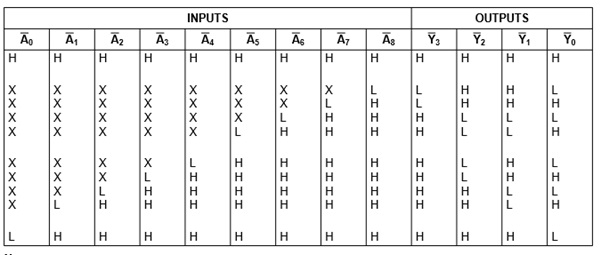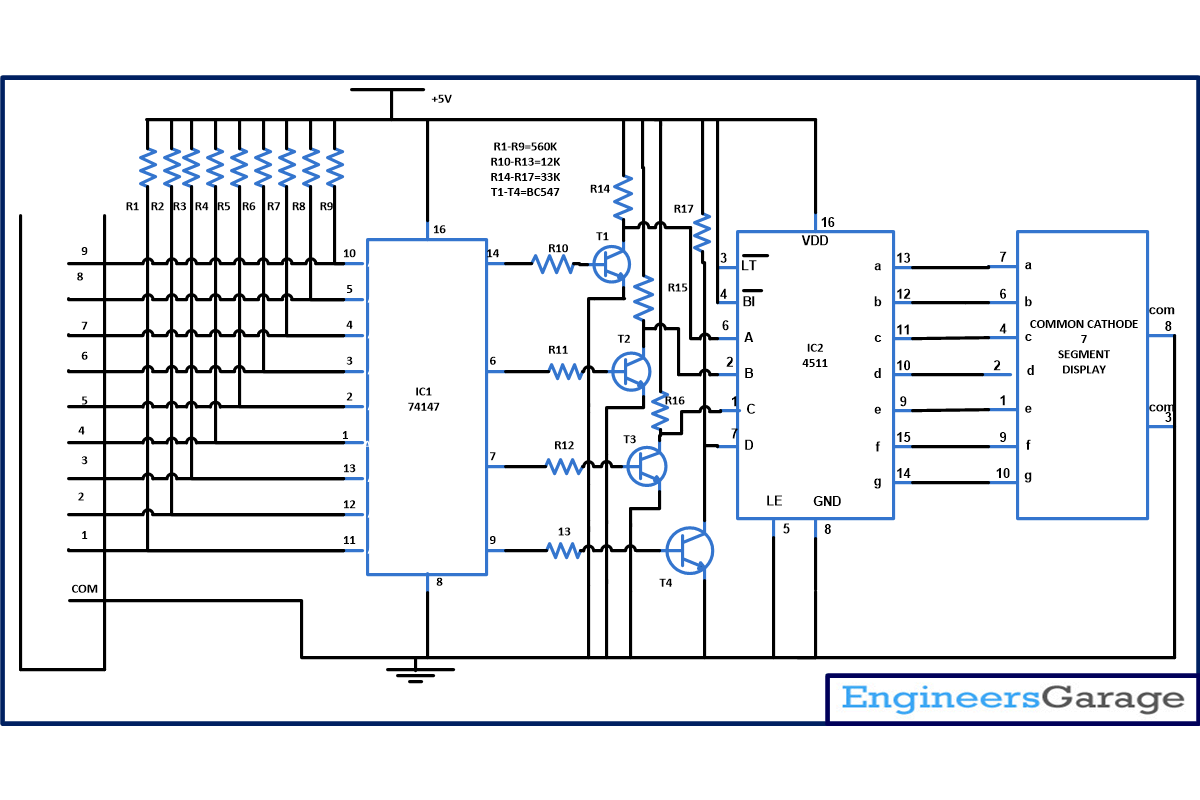The use of water level indicator is common nowadays. This circuit of this project is simple, economical and versatile. It is used to switch on the motor pump when the level of water falls below the lowest level in tank.
This water level indicator with display is based on two IC that is 74147 IC and 4511 IC. Water level indicator has following advantage-
● Most of the circuit display level of water with the help of LED. In this you will get display on common cathode 7 segment display.
● Therefore it become easy to find the level of water in tank.
● It can be easily installed in over headed tanks because of less components used in circuits.
● It prevents the wastage of water due to over flow of tank.
● Can be operated with the help of 12V battery or adaptors (converts 230V AC to 12V DC) readily available in markets.
[[wysiwyg_imageupload:9923:]]
Fig. 1: Prototype Of Water Level Indicator Circuit On Breadboard
IC 74147 is a 9 input priority encoder IC which accept data from nine active low input and convert it into 4 binary active low output. When 2 or 3 output goes high simultaneously than output with highest priority is display on output that’s why it is called as priority encoder. This IC is also known as 10 line to 4 line priority encoder. Pin configuration and description of IC is shown below.

Fig. 2: Pin Diagram and Pin Configuration Of 74147 IC
Truth table of IC-

Fig. 3: Truth Table Of 74147 IC
CD4511 is a CMOS BCD to seven segment latch/decoder. This IC provides the facility of 4-bit storage latch, an 8421 BCD-to-seven segment decoder. It also provide you the of facility lamp test (). It is used to check that all segments of 7 segment is working properly or not. For testing momentarily make the pin low, in short used to test the display. Blanking input () is use to turn off or vary the brightness of the display. Latch enable (LE) is used to store BCD codes. CD4511 is used in various application like in clock, watches, computer, calculators etc. Pin configuration of shown in figure below.

Fig. 4: Pin Diagram Of CD4511 IC
Here A, B, C, D are used to provide the BCD input where A is the least significant bit and D is the most significant bit. And a, b, c, d, e, f, g is same as the a, b, c, d, e, f, g of seven segment display.
Working of IC is very simple. Initially consider that tank is empty, when power supply is on all the input of IC1 is high. From truth table of IC1 you can see that is if input is high then it will give you high on output pin also. This will make the input pin of IC2 low and 0 is displayed on seven segment display.
Now when water in tank reaches level 1 than it will make the pin 11 of IC1 low and remaining pin remain pin high as a result we will get a output from pin 9 of IC1. From the truth table you can see bar on input and output means output is complemented so to make the low signal high we are providing the output from IC1 to input of IC2 with the help of a transistor. Now IC2 convert the decimal code to BCD code received from IC1. And numeric 1 is displayed on 7 segment display.
Similarly when level in the tank reaches to level 2 it will make pin 12 of IC1 low and 11 is already low but 74147 is a priority encoder that’s why we will receive output from pin 7 and again this low signals are converted into high output with the help of transistor T3 and we will get numeric 2 display on 7 segment display. This indicate that water has reached to level 2.
As water in tank fills we will get numeric 3, 4 ….9 to be display. As soon as numeric 9 is display we came to know that tank is fill and we can switch off the motor to avoid wastage of water.
You can also use 74148 IC in place of 74147. 74148 is also a 8 to 3 line priority encoder.
Circuit Diagrams
Project Components
Project Video
Filed Under: Electronic Projects
Filed Under: Electronic Projects



Questions related to this article?
👉Ask and discuss on EDAboard.com and Electro-Tech-Online.com forums.
Tell Us What You Think!!
You must be logged in to post a comment.